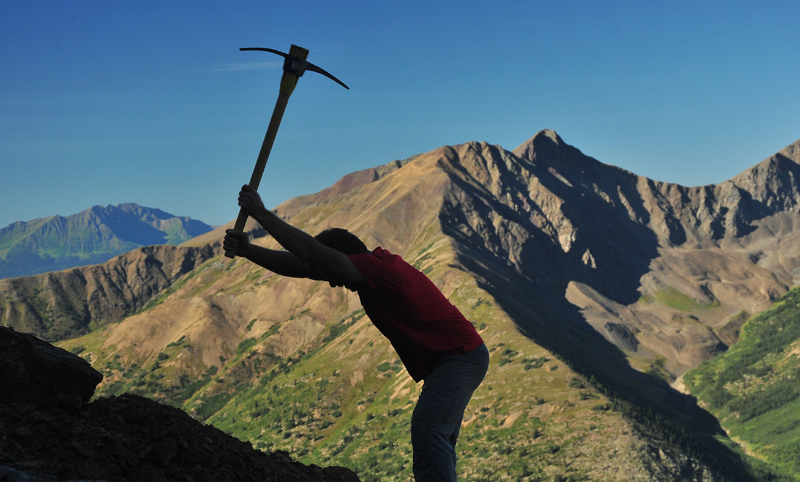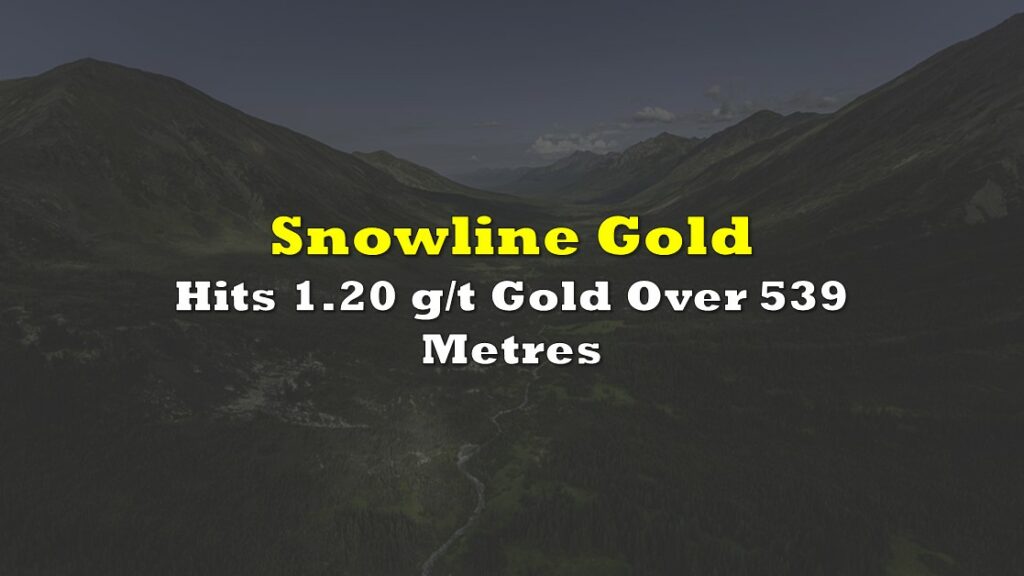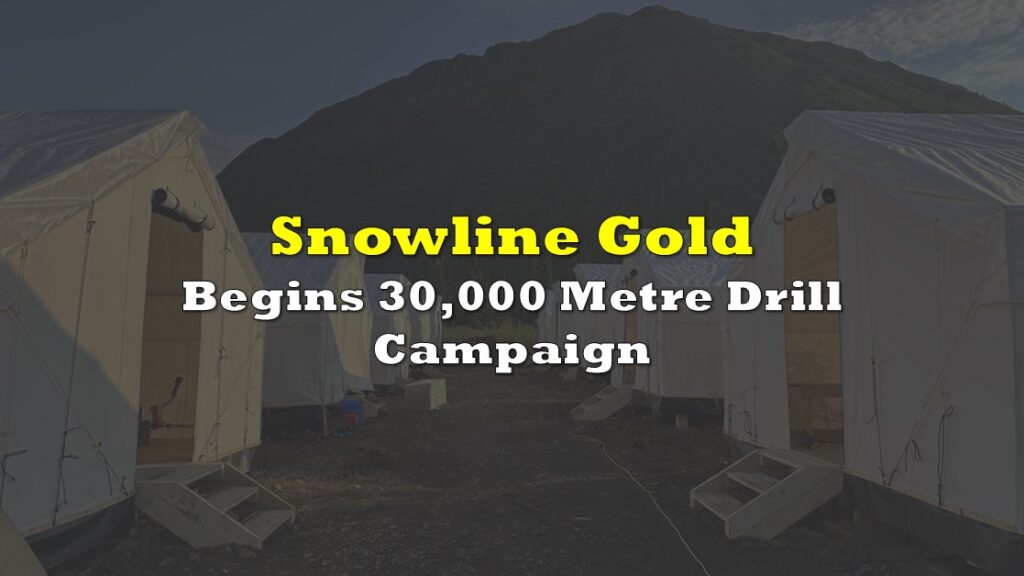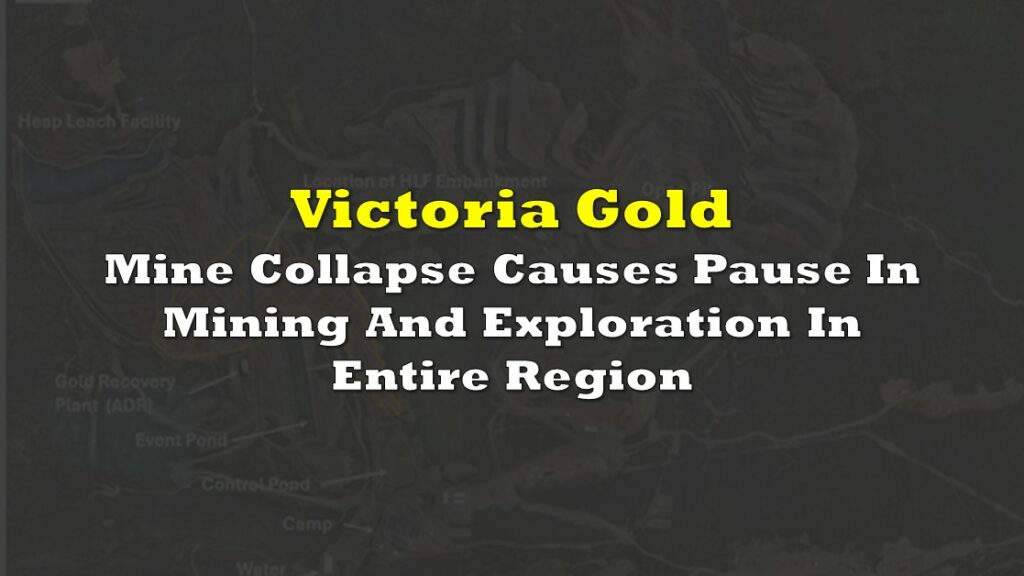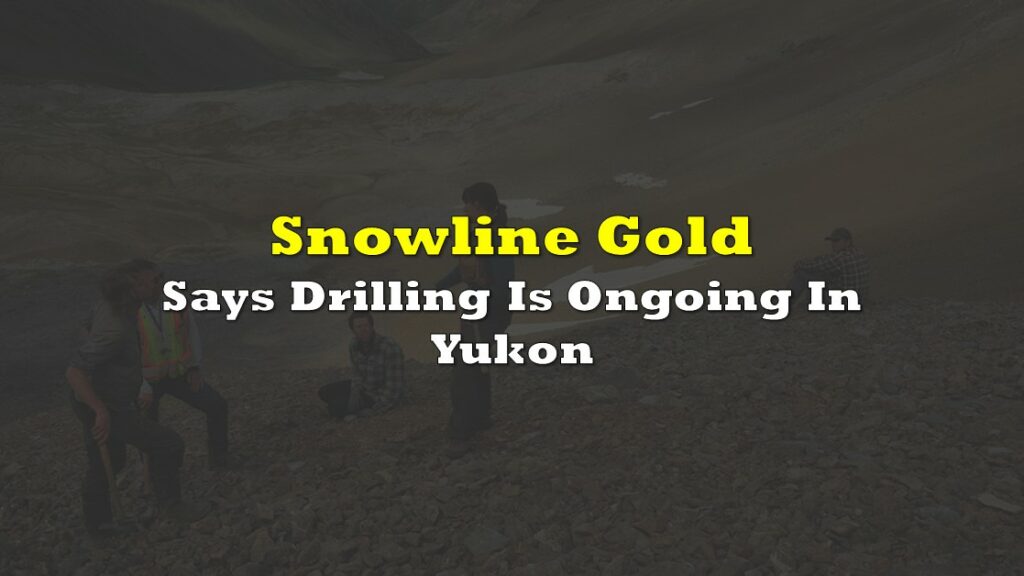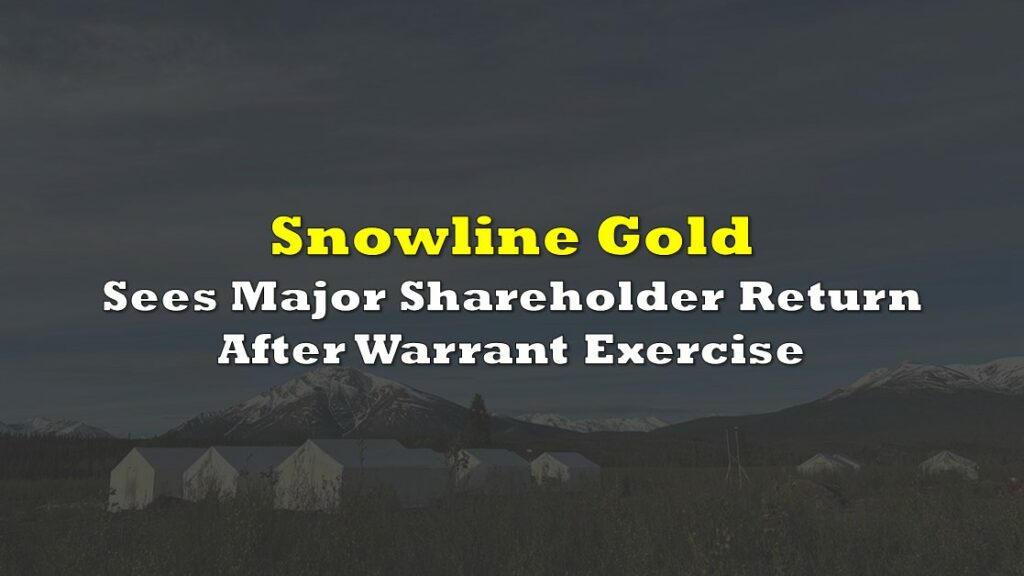Smallcap Steve asked us to take a look at Snowline Gold Corp. (TSXV: SGD), a Vancouver-based exploration company working a gold project in the Yukon Territory.
We were surprised to learn how well it was going. This isn’t generally a very good market for exploration companies, or gold companies in general, but Snowline is managing to go about its business, get its work in, and advance its projects while preserving its market value and maintaining a strong equity with a reasonable upside.

The core asset at Snowline is the Rogue property, a complex that the company is drilling on several fronts in a chase for enough Reduced Intrusion Related Gold System (RIRGS) associated mineralization to amount to a worthwhile deposit.
The Project
RIRGS gold deposits are geological systems that have become mineralized through the hydrothermal and epithermal processes that we usually associate with quartz-vein gold deposits. The “intrusion” is one or more plutons; magma that drove the mineralization process when the system was still hot, and since crystalized into igneous rocks. In their modern forms, the systems have collapsed into a messy tangle of folds, faults and shears, leaving the exploration team to drill through a geological modern art sculpture, searching for the various chunks of the system that collected the gold mineralization when it was stable and active.

The Snowline team has seen some measure of success at Rogue, establishing a respectable gold zone that exhibits grades on the high side. The company is fond of referring to two particular drill holes in the developing Valley zone, averaging 2.48 g/t gold over 553.8 m, and 2.46 g/t gold over 519.6 m, respectively, as, “the best drill intersections on an interval-by-grade basis that the company is aware of from any gold project in the history of Yukon.”

RIRGS style deposits are the genesis of several notable operating Yukon and Alaska gold mines, including the Fort Knox mine (~10 million ounces) and the Dublin Gulch mine (~2.8 million ounces). The drilling to date at Rogue has yet to produce enough data for a resource calculation, but it’s early days yet.
Ownership
We attribute Snowline’s relative success and stability in this messy gold market partly to a strong and uncomplicated ownership structure that selects its partners carefully, and handles them through its cap table.
Snowline is the sole owner of the Rogue property, subject to a partially recoverable NSR due to the vendor. It has been able to conduct $28 million worth of exploration on Rogue in the past 21 months, by virtue of a partnership with B2Gold, which has financed its way into a 9.9% position in Snowline’s stock.
B2Gold (TSX: BTO)(NYSE: BTG) is a Vancouver-based success story that made its mark in advanced exploration when it was first formed by executives departing from Bema Gold in 2007, as it was acquired by Kinross. Its status as a mature, international producer that generates consistent profits and dividends is a fairly recent phenomenon. The company currently has a $4.6 billion market cap in its sixth year as a dividend-producing issue.

Its management knows, as this column is fond of reminding readers, that mining companies are a collection of declining assets that need to be constantly replenished in order for the business to sustain itself. Typically, companies the size of B2Gold don’t get involved with exploration projects that haven’t yet produced resource calculations. But B2Gold is close enough to its developmental roots that it can make itself comfortable at this level of risk when it sees a situation it likes.
Holding its interest in Rogue as a position in Snowline’s public equity gives it a measure of liquidity. Should Snowline’s exploration continue to go well, and the deposit become one B2Gold was interested in adding to its reserves, it would have the inside track on purchasing Snowline, but it could just as easily hold its position for investment purposes, and cash out to another willing buyer before it becomes time to spend the serious development and construction money.
The position projects that B2Gold has confidence in the Snowline team’s ability to advance the project in a way that will find and delineate in-ground gold resources if they’re there.
Presently, Snowline is preparing to follow up on the success it’s experienced thus far at Rogue with a spring program that will feature a four-drill program, an expanded camp, and more surface exploration at the large, high-potential property. The company had a $39 million cash position at the end of September. It has taken very good care of its cap table and public float, and demonstrated an ability to make judicious use of flow-through financing without causing excessive dilution of its public equity.
Snowline’s stock has shown resilience in a very volatile market. The fact that it has been able to sustain a $700 million market cap as a developing exploration play is a credit to the company’s operators. It may see a test of that resilience this coming March 1st as the final 3.8 million shares that were issued to the vendor to buy the property are due to be released from escrow. Snowline’s TSX Venture issue has traded an average of 186,562 shares per day over the past three months.
Information for this briefing was found via Sedar and the companies mentioned. The author has no securities or affiliations related to this organization. Not a recommendation to buy or sell. Always do additional research and consult a professional before purchasing a security. The author holds no licenses.

